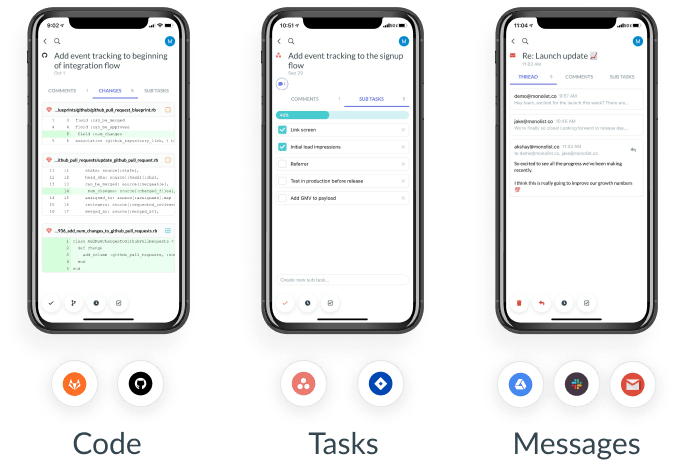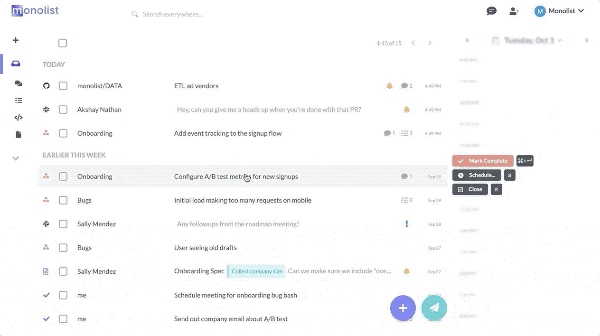Every day, doctors make dozens of important decisions concerning patient care. They pull from their years of educational and professional experience, carefully consider the pros, cons, and risks, because at the end of the day, the consequences of their decisions affect lives.
It's concerning, then, that a patient who sees a physician at the end of the workday is 33% less likely to be scheduled for an operation than the first patient of the day. Are patients coming in at the end of the day any different than those coming in at the beginning?
It turns out that doctors, more than most professionals, suffer from decision fatigue. The more decisions you make, particularly those that require careful deliberation and high stakes, the less willpower you have to make the next incremental decision. After an entire day of these types of decisions, you're likely to avoid making any decision whatsoever.
To anyone booting up Netflix after a hard day at work, this feeling is very familiar.
While they make particularly risky decisions, doctors aren't the only professionals suffering from decision fatigue. As the modern workplace shifts to an always-on, 24/7 grind, largely driven by the adoption of numerous workplace tools, coupled with the increasingly synchronous nature of workplace collaboration, the average knowledge worker is forced to make more decisions than ever before.
In other words, if you work in an office, you're probably suffering from decision fatigue.
No decision is too small: what are the types of decisions we make in a day?
Some estimates suggest we make over 30,000 decisions a day. It's not a surprise then that the average person suffers from decision fatigue.
To better understand this number, and how these decisions affect each other, it's worth it to explore the types of decisions we make in a typical day of work.
The big:
Some decisions we make at work are large, coordinated efforts that require synthesis, careful deliberation, and usually involve more than one person. We don't make many of these decisions, so they represent the overwhelming minority in that 30,000.
The good:
Then there come the decisions that, while not the most numerous, are the most important for our day-to-day jobs.
If you're a writer, you make hundreds of decisions on how to order a particular set of words to tell the best story. If you're an engineer, you're making decisions that help you write, delete, then re-write code. The best environment to make these decisions is while in a flow state.
As such, to effectively enter this flow, you need uninterrupted time to zoom in, focus on the task at hand, and iteratively make the decisions that help you accomplish your core job. The more time you get to make these decisions, the happier your company should be.
The ugly:
At the bottom of the pyramid, making up the large majority of the decisions we make in a day, are the micro-decisions. A notification buzzes on your phone – do you look at it or not? When you look at it, do you address it or put your phone away? When you open your computer, what tab do you open? Who do you respond to first, second?
Thanks to the explosion of workplace applications and synchronous chat apps (remember the days when you only had to respond to 10 emails, not 197 Slacks?), we have to make more micro-decisions per day than ever before.
The increase in these micro-decisions has a steep cost.
How tools force us to make more micro-decisions, and what it does to us
More notifications from more services force us to make small decisions constantly. Do we stop what we're working on to check that Slack message? When your phone buzzes in your pocket while you're working on a particularly difficult code block, do you pull it out?
Micro-decisions break flow
When you consider the fact that it takes over 20 minutes to achieve focus after suffering a distraction, the cost of these micro-decisions, driven by tool-based notifications, really begins to add up. Every notification represents a distraction, and addressing them leaves us exhausted, and in a worse position to tackle the larger, harder decisions that are the bread-and-butter of our jobs.
Micro-decisions increase stress
In the 1890's, Russian physiologist Ivan Pavlov observed that dogs would begin to salivate when they observed an item that they associated with food. In 2019, blood pressure spikes when you hear the Slack notification.
As workplace tools have become increasingly synchronous (real-time), the expectations of an immediate response has increased. As such, every time you get a notification, you have to make a choice: do I knowingly avoid the person vying for my attention and feel the anxiety of letting him/her down, or do I respond to the notification and pay the cost of context-switching?
Neither option is ideal.
What can we do about it?
The best way to minimize decision fatigue is, not surprisingly, to simply eliminate decisions in your workday.
Given micro-decisions represent the vast majority of the decisions you make, structuring your day to eliminate these decisions is the best way to avoid decision fatigue.
Deal with one thing at a time
As we've already discussed, context-switching is disastrous for productivity. To minimize context-switching, try being deliberate about how you spend your time by actually setting aside time on your calendar to work on specific tasks. During that time-slot, only focus on that task, and don't respond to the various notifications you receive from the tools you use.
This practice is called time-blocking, and it's a great way to commit to individual tasks, reduce context-switching, and plan more realistically.
Furthermore, actually putting tasks onto your calendar provides visibility to your teammates on what you are working on. That way, they'll think twice about pinging you to help with some other issue, and won't feel ignored if you don't respond to their request.
When possible, stick to asynchronous communication
As more formal business communication transitions to real-time chat, important tasks get lost in bloated threads. We've all experienced frustration of working on something important, only to be interrupted by a chat message about something that needs to be dealt with. To make sure you don't forget the task, you drop what you're working on to tackle the issue from the chat.
At Monolist, we avoid using chat to surface issues or tasks. Instead, we rely on our ticketing service to create a task and assign it to the relevant person, so they can discover and prioritize it without breaking their flow state.
Choose the right time to make the right decisions
As we've already discussed, your ability to make high-quality decisions declines the more decisions you make throughout the day.
Jeff Bezos famously schedules all of his most important meetings before lunch. Intuitively, it makes sense to tackle your hardest tasks while you're freshest. Research suggests it's doubly important to do so when making decisions.
For your most important decisions, set aside time in the morning to focus on them. For lighter-weight tasks, such as responding to chats or emails, stick to the end of the day.
Choose the right context for a decision
Disorganized chat channels are not the right place to make decisions. Context gets lost in the thread, and there's too much pressure to respond immediately instead of reflecting on what the ideal approach to your decision is.
Instead, consider what context is appropriate for the particular decision you're trying to make. Is it important, and would it benefit from multiple points of view? Schedule a meeting specifically for that decision.
Focus on routines
The sharp increase in the number of workplace tools we interact with means that we discover work in more places than ever before. A task can be discovered in a Slack room, a Jira ticket, an email, or a post-it on the desk. Every time you sit down at your desk without a clear idea of what you want to work on, you're forced to go through a lengthy process of discovering work by navigating to all of your tools.
Instead, build a routine where you complete specific tasks at regularly scheduled intervals. For example, respond to emails at the same time slot every day, or before you go to bed, set out your clothes for the next day.
Consistent routines eliminate micro-decisions, and make your work days more predictable.
Choose your tools wisely
As we've discussed, workplace tools cause decision fatigue
- They send you notifications which break your flow
- Switching tools requires you to switch contexts
- Discovery of new work is time-intensive, and requires going to many places
Ideally, your tools should actively mitigate these issues instead of contribute to them:
- Choose tools that give you as much context in one place, without sending you constant notifications
- Your tools should help you plan your time, so you're focused on the task at hand instead of constantly switching contexts
- Your tools should help you discover work quickly and easily, without scanning too many different places.
Monolist is here to help.
At Monolist, we're building tools to help developers conquer decision fatigue.
All of your tasks in one place, no matter what tools you use.
Advanced scheduling features that let you plan your day around the tasks you need to complete.
Search that lets you explore all of your tools, from one place.
Want to conquer decision fatigue? Let us help.
Want to join our mailing list? Sign up here.










Top comments (0)